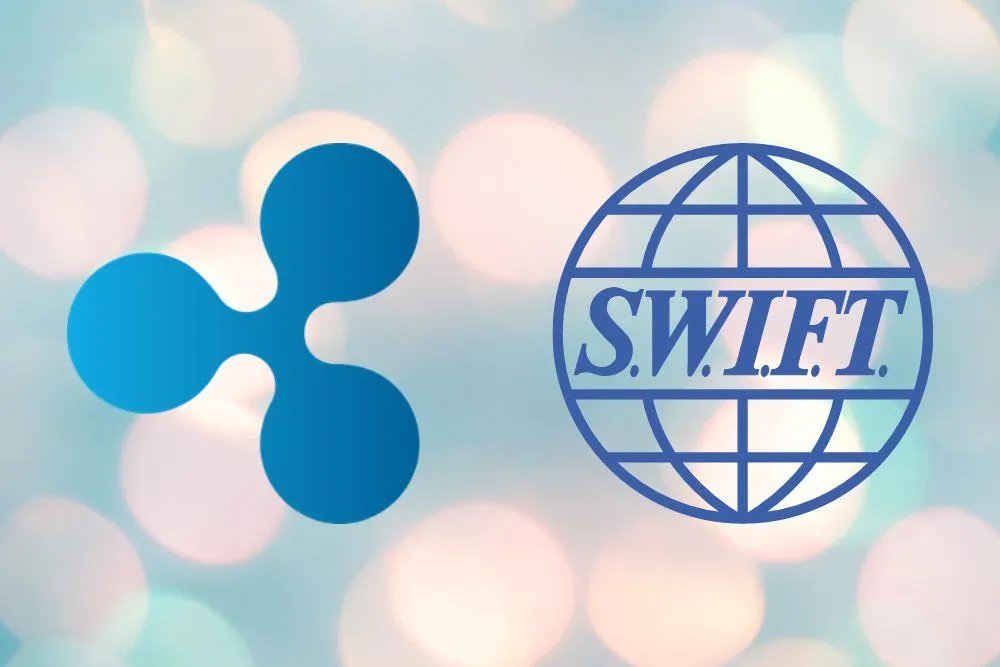Did SWIFT Just Eat Ripple’s (XRP) Lunch? Here’s What Happened
0
0

- SWIFT’s blockchain shift challenges Ripple’s dominance in cross-border payments.
- Ethereum’s Layer 2 Linea could reshape global financial messaging systems.
- SWIFT’s blockchain move validates Ripple’s vision of decentralized payment solutions.
SWIFT, the dominant force in global financial messaging, has reportedly taken a bold step toward blockchain technology that could significantly challenge Ripple’s position in cross-border payments.
According to a report from The Big Whale, SWIFT is now reportedly experimenting with an on-chain migration of its messaging system using Ethereum’s Layer 2 solution, Linea. This move signals a major shift in SWIFT’s strategy to modernize its payment infrastructure, potentially reshaping the competition between traditional financial systems and blockchain-based solutions.
The project, still in development, involves several prominent financial institutions, including BNP Paribas and BNY Mellon. The integration of blockchain into SWIFT’s operations is expected to take months to materialize, but the implications could be vast.
By adopting Ethereum’s Layer 2 solution, SWIFT is positioning itself to enhance the efficiency and transparency of cross-border transactions, aiming to reduce costs and processing times for international payments significantly.
Also Read: Ripple Leads the Way in Strengthening US-UK Financial Collaboration through Digital Assets
The Impact of Linea on SWIFT’s Blockchain Strategy
Linea’s zkEVM technology, which employs Zero-Knowledge (ZK) rollups, is at the core of SWIFT’s blockchain integration. This solution allows for faster transaction processing while maintaining the privacy and security required for financial institutions.
As a Layer 2 solution compatible with Ethereum, Linea’s technology will help SWIFT scale its operations without compromising on privacy, a critical factor for banks dealing with sensitive financial data.
The decision to use Ethereum-based solutions is a bold one for SWIFT, which has previously experimented with blockchain and tokenized assets. If successful, this initiative could pave the way for a major transformation in the global financial messaging system.
SWIFT’s transition to blockchain could lead to the removal of inefficiencies in traditional payment systems, creating a faster, cheaper, and more transparent method for international transactions.
What This Means for Ripple and the Payment Industry
SWIFT’s latest move has sparked reactions across the financial and crypto industries. CryptosRus pointed out that this could pose a significant challenge to Ripple, which has spent years building a decentralized network for cross-border payments with its XRP token.
Ripple has positioned itself as a competitor to SWIFT’s legacy messaging system, and now, with SWIFT experimenting with blockchain technology, the competition could intensify.
The volume of transactions SWIFT handles is massive, and even a small percentage moving to blockchain could disrupt the existing payment landscape. As CryptosRus noted, just 1% of SWIFT’s $150 trillion payments could result in more on-chain flows than all stablecoin transactions last year, which totaled approximately $27.6 trillion.
However, others, such as Contrarian DNA, view this move not as a threat to Ripple but as a validation of the need for decentralized payment systems. Rather than eating Ripple’s lunch, SWIFT is acknowledging the shortcomings of traditional financial networks and embracing blockchain technology as the future.
While the outcome remains unclear, SWIFT’s shift to blockchain could create new opportunities for both Ripple and the broader digital payments ecosystem.
Also Read: Ripple’s RLUSD Listed on Bybit: A Major Milestone for the Stablecoin
The post Did SWIFT Just Eat Ripple’s (XRP) Lunch? Here’s What Happened appeared first on 36Crypto.
0
0
 Manage all your crypto, NFT and DeFi from one place
Manage all your crypto, NFT and DeFi from one placeSecurely connect the portfolio you’re using to start.

 Exclusive
Exclusive  (@gregory_raymond)
(@gregory_raymond) 



